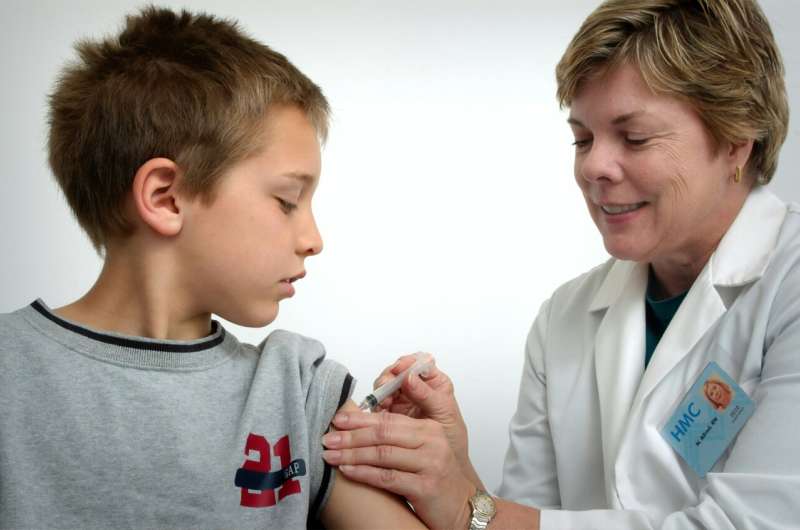
Vaccines are a safe and highly effective way to prevent common diseases that used to seriously harm or even kill infants, children and adults. When children have all their recommended vaccines on schedule, that helps ensure that everyone stays healthy. But what if your family can’t afford them?
A program called Vaccines for Children (VFC) may be able to help. The program works to make sure all children get the vaccinations they need on time without cost being a barrier.
Without vaccines, children are at risk of becoming seriously ill or even dying from childhood diseases such as measles and whooping cough. These diseases can easily spread at home, school, work or in public places. When enough of us are vaccinated, we help protect the entire community. This includes people most at risk for serious illness and those who cannot get a vaccine for health reasons.
Children ages 18 years or younger who meet at least one of these requirements qualify for Vaccines for Children eligibility:
Caregivers do not have to show any proof that their child is eligible for free vaccines through the VFC program. But your doctor must ask the following questions and document the answers:
This information might already be in your child’s medical record. If your child’s insurance or Medicaid status changes, you need to inform the doctor’s office of those changes.
The Vaccines for Children program covers all recommended immunizations for children from birth through 18 years of age, including the COVID-19 vaccine.
If a child is behind on their vaccine schedule, the VFC program can help them catch up.
Vaccines provided through the Vaccines for Children program are free, but the law allows the health care provider to charge an administration fee. This fee is like a patient’s copay; it helps providers offset their costs of giving the vaccine to a child.
Providers can charge what they believe is fair. This could range from no charge up to the maximum amount allowed by their state. This fee varies from state to state. If a caregiver is unable to pay the administration fee, the child’s health care provider must still give their child the appropriate vaccines. Contact the Centers for Medicare and Medicaid Services (CMS) regional Medicaid office with questions about the administration fee.
Be sure to ask the provider when making the appointment what fees they might charge.
More than 37,000 providers nationwide are enrolled in the Vaccines for Children Program. These include pediatricians, public and private health clinics, hospitals, schools, departments of health, pharmacies, Federally Qualified Health Centers and Rural Health Clinics.
To find a VFC Program provider near you, contact your local or state health department to see if your state has a searchable website for VFC Program providers. You can also call providers in your area and ask if they are enrolled in the program.
CHIP: One way to make sure your child has health coverage
If a child needs health coverage and does not qualify for Medicaid, they may be eligible for the Children’s Health Insurance Program (CHIP).
CHIP provides low-cost health coverage to children in families that earn too much money to qualify for Medicaid. In some states, CHIP also covers pregnant women. Each state offers CHIP coverage, but rules for who qualifies are different from state to state.
Caregivers can apply any time of year to see if they qualify. If families apply for Medicaid coverage through their state health agency, they will also learn if their child qualifies for CHIP. If they do, they won’t have to buy an insurance plan for them. Call 1-800-318-2596, go to www.insurekidsnow.gov or fill out an application through the Health Insurance Marketplace. Once qualified, coverage can start immediately.
2024 Tribune Content Agency, LLC.
Citation:
Vaccines for children program offers free immunizations when cost is a barrier (2024, October 28)
retrieved 28 October 2024
from https://medicalxpress.com/news/2024-10-vaccines-children-free-immunizations-barrier.html
This document is subject to copyright. Apart from any fair dealing for the purpose of private study or research, no
part may be reproduced without the written permission. The content is provided for information purposes only.

